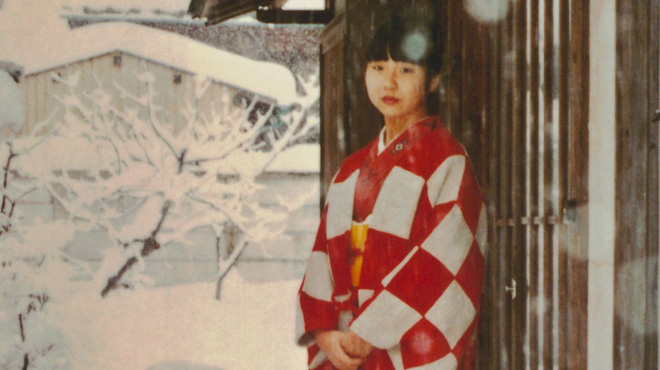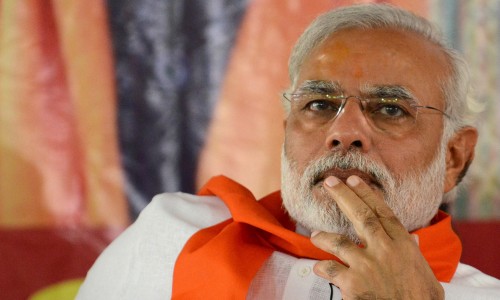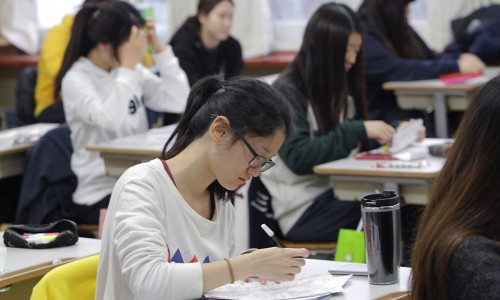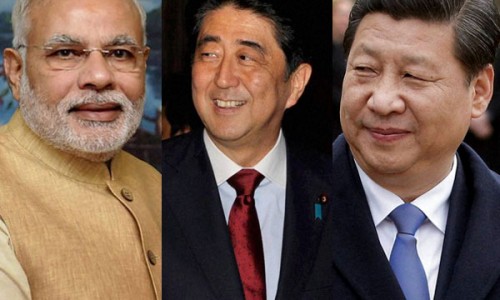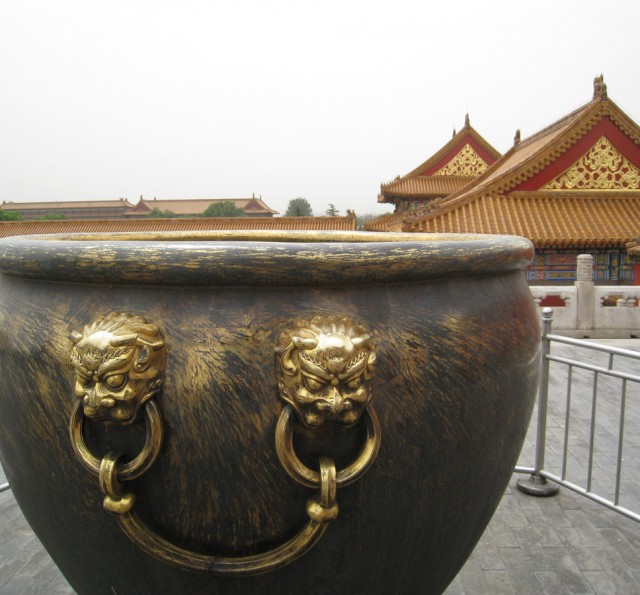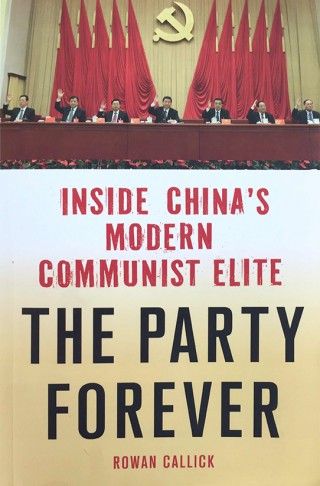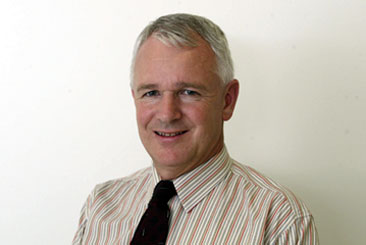Published in The Australian magazine, Jan 17, 2015
Rowan Callick (Asia-Pacific editor)
Megumi Yokota was a bubbly 13 year old schoolgirl when she disappeared, just a couple of hundred metres from her home on the Japanese coast, where her parents and twin younger brothers were waiting for her to join them for dinner on a chilly winter night.
She “reappeared” 25 years later, in 2002, when North Korea’s Dear Leader, Kim Jong-il, admitted that he had ordered agents to abduct people from Japan – most of them kidnapped opportunistically on or near a shore, knocked out, tied up, thrown into sacks and into the hold of high-powered spy-boats disguised as fishing vessels.
But agonisingly, Megumi’s mother Sakie and father Shigeru, now aged 78 and 81, have still not been reunited with their beautiful daughter since that fateful evening when she was stolen.
She is now 49, and has a daughter of her own, Kim Eun-gyong, by another abductee – from South Korea, from whom she is now divorced. Megumi’s parents met Eun-gyong in Mongolia earlier this year.
But Megumi herself has been allowed no contact with the world beyond the “hermit kingdom”, and even her daughter is reluctant to talk about her. “She seems very fine and active, and also outspoken like Megumi,” said Shigeru. “I wonder if she can be that lively without a mother…”
After Kim Jong-il’s confession in 2002, the Yokotas were advised that Megumi had killed herself on being told she could never go home. They were sent a casket containing bones. But DNA tests using her umbilical cord, which her parents had kept, showed these were of two unrelated people.
Megumi and the others appear to have been kidnapped in order to train North Korean agents to pass themselves off as Japanese so they could commit plane hijackings, assassinations, and other acts of terrorism.
Excelling due to her youth and intelligence, she is believed to have been introduced into the circle of the Kim family which rules the country – including teaching Japanese to today’s harsh young leader Kim Jong-un. This reinforces their refusal to release her, since she simply knows too much, as one of a rare, privileged yet also endangered elite, known as The Admitted.
She is one of 17 people whom the Japanese government officially recognises as having been abducted, but the national police list a likely 861 cases. North Korea has admitted to stealing 13 of them. Five were allowed to return following talks in Pyongyang 12 years ago with then Japanese Prime Minister Junichiro Koizumi, but the rest remain locked in the world’s most secretive state.
Naturally, this would remain a huge untreated wound at the heart of any democratic country. Japan’s popular Prime Minister Shinzo Abe has long been a strong advocate of the abductees and their families, who are now ageing fast and fearing that they may never see their loved ones again.
An Australian diplomat compared the intensity of emotion that the issue arouses in Japan, with the imagined response of Australians if they learned that the Beaumont children, who disappeared from Glenelg beach in Adelaide in 1966, had secretly been seized by North Koreans.
When Abe spoke to Australia’s parliament in July, he wore prominently a blue-ribbon badge, the symbol of the campaign to bring the abductees home.
Recently North Korea – which had been feeling especially isolated internationally – pledged to establish a “special investigation committee” to examine the remains of “all Japanese” including of abductees, with Japanese officials granted some access.
In return, Tokyo raised the ire of others in the front line of dealing with the rogue regime by lifting three sanctions – allowing port visits by North Korean vessels and the return of pro-North Korea Chongryon officials to Japan, and relaxing financial restraints.
Fundamentally, it is the heartbreaking story of Megumi that is intruding so awkwardly into such geostrategic issues otherwise handled by experts in closed rooms.
There can be very few Japanese who do not know who Megumi is by now.
Sakie and Shigeru have given 1,400 talks, in all 47 prefectures in the country, and are still doing that. They are familiar figures on TV. They have flown to Geneva to lobby the UN, they have spoken to politicians from both houses in the US Congress.
They wanted Australian judge Michael Kirby, who recently reported to the UN on human rights abuses in North Korea, to send an investigative team there, but he was barred. “His report encouraged us though,” Shigeru said. “Finally things are starting to move, we think.”
The story has been told in an anime, in a manga graphic book, in a documentary produced by famous Australia-based New Zealander film-maker Jane Campion.
It began on November 15, 1977. The Yokota family were living in a two-storey Bank of Japan house in a quiet, middle-class area of Niigata, a port of 800,000 on the north coast of Honshu island.
The city is best known for its rice, its fish and its sake, for a controversial Tepco nuclear reactor, and for being the setting of “Snow Country,” a classic but stark 1935 novel about the love affair between a Tokyo dilettante and a provincial geisha.
Shigeru had been posted as the central bank’s representative in the region.
Megumi went to badminton practice in the gym after school – she had been chosen for special training as a promising player. Then, wearing her grey and white uniform, she left for home with two friends, walking up a quiet street with few lights. The sun had set two hours earlier. One friend peeled off to the left, the other to the right. She reached the top of the hill, where she would have turned left to reach her home in a couple of minutes.
But something terrible happened there.
Sakie, starting to panic because Megumi had never before been late home, rushed to the school gym, where her hopes were raised when she heard young women’s voices but sank on discovering it was a mothers’ volleyball team.
She phoned the police, and tracker dogs were swiftly brought in. Police Superintendent Koei Miyamura said they lost Megumi’s scent at the turn-off.
To the left, a short way along the street and then a brief right turn, her home. Straight ahead and down a slight descent, past a clump of pine trees guarding a Shinto shrine, lay the grey sea, waves low that night – fishermen said a boat could have come close to the shore.
Shigeru, speaking with a practised smile – the alternative is obvious – said “the police were concerned she could have been kidnapped for ransom. They conducted the biggest search ever in the prefecture, but picked up no clues.
“We contacted our friends at two cities where we had lived earlier. We appeared on five TV networks, showing photos of Megumi. But nothing… People said she was spirited away by ghosts, or by UFOs.”
Eventually, when it was time for the twins to take their exams for senior high, the family moved to Tokyo, Shigeru to head office. “The boys felt a little more relaxed when we moved, because when they were young everyone always asked them about Megumi.
“Our sons went on to college. They started to work, and moved, to Fukuoka and to Nala.” Sakie added: “They have turned out to be very fine adults – though I’m sure they have many feelings, and remain troubled inside.”
One of the twins has one son, the other has three. Megumi remains the only girl.
In 1997, after Shigeru had retired, a phone call came out of the blue from the secretary of an MP in the upper house, with the bizarre news that “your daughter appears to have been abducted by North Korea and is living in Pyongyang.”
When they arrived at the MP’s office, they were given a book from October 1996 containing an article on abduction directives from Kim Jong-il.
Shigeru said: “The writer was asking for help about alleged cases, including one of a 13 year old girl seized in 1977 or 1978 on her way home from practising badminton.
“It said that a spy was spotted by her when he was about to leave Japan after accomplishing his mission. He took her back because he didn’t want her to report to the police. She wanted to go home. She was told she could go back after mastering the Korean language. After she reached 18 she was warned she would never be able to go home to her country, and she broke down.”
Later, a North Korean agent who defected said she was a teacher at a spy school there. An airliner hijacker confirmed this, saying she taught Japanese to high ranking spies and so has been kept apart. Another defector said she knows many secrets which cannot be allowed to be revealed.
But her parents remain baffled: how would she have known the Korean was an agent?
The crucial article about abduction was in a small circulation Korean book published by a research institute, so very few people knew. The editor came to Niigata, and talked to a small audience, who responded immediately that that this must be Megumi, and gave him old newspaper articles.
Shigeru said: “We learned later that the author had obtained this information from South Korea, and that the Japanese government had discovered it in 1995. But it didn’t do anything, because it was then engaged in ‘normalisation’ talks.”
It has since emerged that Pyongyang has abducted people from 12 countries.
The MP, Atsushi Hashimoto, and others urged the Yokotas to disclose Megumi’s name publicly. “We felt it was safer not to do so,” said Shigeru, “but they eventually persuaded us.”
The prime minister was quizzed about it in the Diet, Japan’s parliament, prime time TV covered the story heavily, and two months later the government acknowledged that several Japanese people had been abducted.
The Yokotas joined the families of other abductees, and gathered 10 million signatures in a petition to pressure the government to release the full details of what it knew, and to rescue them.
Shigeru said: “Some people believed at first that it was a right wing conspiracy and other such theories. We didn’t have further evidence, we were often ignored, but we persisted.”
When North Korea admitted seizing Megumi, they sent a photo showing her – by now in her mid 30s – posing with what her mother Sakie immediately recognised as exactly the same stance as she had in a photo taken in Kyoto when she was in grade 5, which showed she had been practising ballet. In Pyongyang, she was wearing badges with the images of Kim Il-sung and Kim Jong-il.
“We were so surprised to see that photo, we last saw her in school uniform. It seemed like a story, a fiction. I still feel that way,” said Sakie.
“But I also felt very relieved because she looked healthy. I was imagining so many things in my mind…”
When an investigation team went from Japan, her husband gave her “remains” to a government official saying ideally he would like to give her remains to her parents, but couldn’t. They also brought back photos of her belongings, including her badminton racquet.
Since the fake remains, they have received no fresh information about Megumi, or correction of past information.
“Other parents of abductees are older than us,” said Shigeru. “They’re ageing fast, in their 90s. My wife is the youngest parent. I’m the second youngest. We can’t wait for ever, time is running out.”
Sakie said that “when Megumi went missing, it was a special time. She was so interesting, even inspiring, and we had begun to talk a lot. She had always been cheerful and active and fun, and liked joking.”
She loved animals, picking up stray cats and feeding them, one day wrapping a frog in clothes and playing with it.
“The landscape of Niigata has for me been frozen from that moment,” she said, “when we realised she wasn’t home on time. It’s a beautiful landscape of pine trees and bays, but one I don’t want to recall it. When I go there, I’m flooded with emotion, with sad and bitter memories. I almost wanted to kill myself when I was there, I had no idea what I could do to find her.”
Sakie discovered a Christian faith in those hard times, and “found a meaning for my life, something very solid. I pray with my new Christian friends, many of them, for our children. And for the people of North Korea, for that country. That’s how I’ve managed to keep myself stable”
There is something very cruel in North Korea, she said, “as we saw in the executions of Kim Jong-un’s uncle and his family. But I believe every human being has something good and something bad in them.”
After Megumi disappeared, “we struggled very much as a husband and wife,” said Sakie. “When our family came to the point where we could lead a normal life, when the children had grown up, we learned about the abduction. And again our life totally changed.
“We can’t really depend on each other all the time, but we have bonded strongly. I just hope I have my child back while I am alive.”
Who is to blame? “We believe, some of the leaders of that country,” said Shigeru.
They seem to have ordered the spy boats to keep coming.
In December 2001, a ship disguised as a fishing boat refused to obey a Japanese coastguard order to stop. As it fled, crew used automatic rifles to shoot at the Japanese, wounding several.
After a prolonged skirmish, the crew scuttled the vessel, and all 10 drowned. It was salvaged, and is now on display. It was being used as a “mother ship” for spying operations and to deliver illicit drugs.
The boat had hidden double-doors at the back to ease access for underwater scooters and frogmen – such vehicles and suits were discovered, as were Russian made weapons mounted on the deck, a machine gun and anti-aircraft gun. Its powerful engines propelled it at 60km an hour.
The crew wore Kim Il-sung badges, and several were believed to be secret agents. Phone numbers of Yakuza hit-men were found on their mobile phones.
Two years later the Pong Su, a North Korean freighter flying a Tuvalu flag of convenience was intercepted in NSW waters by Australian Special Operations Command, officers landing on the vessel’s deck by helicopter.
The ship, modified for long voyages without needing to port, was suspected of involvement in smuggling at least 150 kg of heroin into Australia, having sailed close to the Victorian coast where one of the crew drowned after reaching the shore near Wye River by dinghy in stormy conditions.
Searches of the ship by Australian authorities – who scuttled it in 2006 – revealed it had been modified for long voyages and was carrying enough fuel and provisions to travel around the world without needing to port.
Dogged Japanese police superintendent Koei Miyamura is keeping Megumi’s case and that of the others abducted from Niigata, open: “It was a brazen and tragic act of crime.”
He said that the Sea of Japan tower not far from the Yokotas’ then home, provided a landmark from far out to sea, which could have been the lure for the agents to be in that area.
A police sign stands near the howling, wintry sea shore, seeking information about Megumi’s case. There were many responses early on, he said, but recently, very few.
One North Korean agent was arrested in the prefecture in the 1950s and two in the 1960s, and their boats confiscated. So there is a faint trail.
Five of the 17 officially designated abductions happened in Niigata.
Eight months after Megumi was seized, 20 year old student Kaoru Hasuike was walking along the shore on a pleasant summer evening with his 22 year old girlfriend Yukiko Okudo. They were surrounded by agents, overcome, knocked out and bundled in sacks into a boat.
They were each told the other was left behind in Japan, but after a few years in North Korea reintroduced without warning, brought together suddenly in a room in Pyongyang and allowed to marry – because married abductees were viewed as less likely to escape. They had two children.
In 2002, after 24 years, they were among the five allowed to return a month after Prime Minister Koizumi’s visit. Their son and daughter were not freed to follow them until two years later.
They are now settled back successfully, and have since had a third child – an apparently ordinary Japanese family with an extraordinary history. Hasuike, an academic, has built a second career translating South Korean novels, using the language he had to learn during the abduction.
Hitomi Soga, who returned with Hasuike and Okudo, was seized aged 19 with her mother Miyoshi, aged 46, 12 days after the couple, from near their home on Sado Island, also in Niigata. Miyoshi was never seen again. Hitomi married Charles Jenkins, a US army defector, and they are living back on the island today with their two daughters.
Interpol has issued arrest warrants for three suspects over the kidnapping of the young couple: Choe Sun Chol, Han Geum Nyong, and Kim Nam Jin, all aged 76-86, with photo-fits. Kim Myeong Suk, a female agent about the same age, is wanted for Soga’s abduction and her mother’s murder. But none is likely ever to stray into the world outside the “Hermit Kingdom.”
Superintendent Miyamura said: “We can have no contact with our counterparts in North Korea, so this case is extremely difficult.”
Naoki Shida, the director of Niigata’s prefecture abduction office, who organises films, animes, and 40 exhibitions a year on the issue, said: “We strongly believe the voice of every Japanese person is a big force to move the Japanese government and the international community and eventually lead to their return.”
He said: “I often visit high schools – my own son is in Grade 11 – and get asked, especially by girls, is this happening in Japan even today? I answer that it shouldn’t, but…”
Senior diplomat Taisuke Mibae is director of the abductions office set up by Prime Minister Abe within his own department, based in a building across the road from his own official residence.
He has been on the case for a dozen years, having accompanied Koizumi on his dramatic flight to Pyongyang, and interviewed some of the abductees there.
“I was taken to the top floor of a building in Pyongyang, and each Japanese couple was in a different room. I saw the daughter of Megumi, then aged about 13 – the same age as her mother when she was abducted. I told her that her mother is Japanese.
“She must have been taught to stay calm, she just repeated that she loved her mother and her mother loved her a lot. But her mother was dead, she said, although she didn’t know how she had died.”
Megumi’s husband has been identified as a South Korean abductee who disappeared while on a boat while he was a high school student. He eventually showed up being interviewed for South Korean TV, where he insisted he had been rescued while drifting.
Mibae remains confident that the eight abductees, including Megumi, whom the North Koreans then claimed to be dead, are still alive, “and waiting to be rescued.”
When pressed, he conceded that “at least a part of our confidence is from intelligence.”
Some Japanese citizens are there voluntarily, he said, “but that is a different matter.” They are true believers in the Kim dynasty, including a group of radicals who in 1970 hijacked a plane and insisted it went to Pyongyang. Some are still in Korea, some got married there. Some later went to Europe and abducted others, fooling them into coming to Korea. And others, including some children of the hijackers, have returned to Japan.
Common features of the Japanese abductions, Mibae said, were a small island or river near the sea, and places with clear landmarks. It remained unclear to what extent the victims were targeted for a time, or just seized opportunistically. Wrong time, wrong place.
“When Japanese coastguards engaged in more comprehensive surveillance, the abductions ended.”
He said: “The North Koreans can justify anything. In their mindset, the abductions are a kind of revenge of Japanese wartime sufferings inflicted on them. This helped them legitimise their conduct.”
Abe first met Megumi’s parents when he was working as head of the office responsible for tracking the abductees. He appears determined to solve this issue during his term in office, through the dual approach of dialogue and pressure.
Mibae said: “It’s a mystery what North Korea wants most. But the more their demands, from Japan’s standpoint, the better. The execution by Kim Jong-un of his uncle and others in the family sends a really dramatic message in a Confucian society, however.
The list of crimes the uncle committed included not bowing enough to Kim Jong-un. Very dramatic, this display killing. It’s again a Stalinist dictatorship, the message is that there’s no need for a Number Two. The tragedy for the uncle was that whether he had a faction or not, what mattered was how Kim saw him – as a threat to his own absolute authority.
“But North Korea never fails to follow what others say about them. They have paid great attention to the Kirby report.”
Tsutomu Nishioka is a theology professor whose obsessive preoccupation is as chairman of the National Association for the Rescue of Abductees, whose offices occupy a small suburban apartment, crammed with files and books.
The association was formed five years before Koizumi’s summit with Kim confirmed the bizarre story. It holds big rallies twice a year, with strong political participation including from the prime minister.
Nishioka claims credit that abductions poll as the top issue about North Korea, even above nuclear weapons and missiles.
The issue is complicated by the already-poisoned relationship with the decendants of the 400,000 Koreans – overwhelmingly from the then more industrialised and modernised north of the country – left stranded in Japan, which had occupied Korea since the start of the century, after World War II and the Korean War. The residue who still identify as Korean, about 100,000, continue to run their own banks, restaurants and even school which follows the North Korean curriculum.
“Recently the children visited Pyongyang and sang a song in praise of Kim Jong-un,” said Nishioka. “The text books used in that school say the abduction issue is fabricated. We oppose using our taxes to fund it.
“We are telling North Korea: If you don’t return the victims while their parents are alive, the Japanese people will never regard the issue as resolved, so sanctions will never be lifted.”
He said that if he were to set foot in North Korea, “I’m sure I would be captured and executed. I have received death threats, I guess from agents living here.”
The issue reverberates within a big context. It presents Japan, for the first time in recent history, as the international victim. It provides a human rights issue that has attracted, unusually in Japan, strong support from the right wing.
But fundamentally, it is a human tragedy, a story of a family bitterly robbed.
Megumi’s mother Sakie said: “She sent us a postcard when she was away on a school trip at New Year, saying to each of us individually that she would be home soon, please be waiting for me. We keep that card.”
It was her father’s birthday the day before Megumi disappeared. She gave him a comb. His determined smile flickered briefly off as he patted his pocket where he carries it every day of his life.
Letters to Editor following above article:
Megumi’s tragic story belies belief. The secrecy and deception the families have had to endure point to a tyrannical and cruel society which would steal young people from one country to work covertly in their own. North Korea could heal much by providing all information to all the families concerned and allow resolution for the many mysteries of where the abductees have lived for the past 40 years. We lived in Japan in 2003 when this story was taking prominence in the media and I have been amazed a movie has not been made of this truth being stranger than fiction saga.
Trudy Moala
11 Viewridge Way
Molendinar
Qld. 4214
Rowan Callick’s portrayal of the Japanese people abducted by North Korean agents blindsided me.
In the last few weeks I have blithely waded through stories regarding various perfidies performed by various monsters posing as human being’s and was typically inured and resigned to a world of seemingly relentless vileness. My job in a medical organisation in the Northern Territory requires frequent exposure to the facts surrounding some fresh horror perpetrated in Indigenous communities and, as a result, it seemed without me realising it, I had become hardened to the suffering of others. As I read about the kidnapping of Megumi Yokota, a 13 year old school girl on her way home from badminton to have dinner with her parents, I looked across the room to my ferociously adored 8 year old pretty, compassionate, hilarious daughter cuddling the dog and was filled with an unspeakable horror at the prospect of any harm befalling her, let alone being snatched from us by the creeps that lurk outside at night. The heart shaped void of her loss felt by her brother, mother and I would be inescapable for the rest of our lives and I was reminded, as I fought back tears, of life’s sanctity, of the profound love for my wife and children. My heart-genuinely-ached for all the parents who have lost children.
My typical Sunday morning was puctuated by an unexpected and potent cathartic moment.
John Kennedy
3 Banksia Close
Nhulunbuy
Northern Territory
